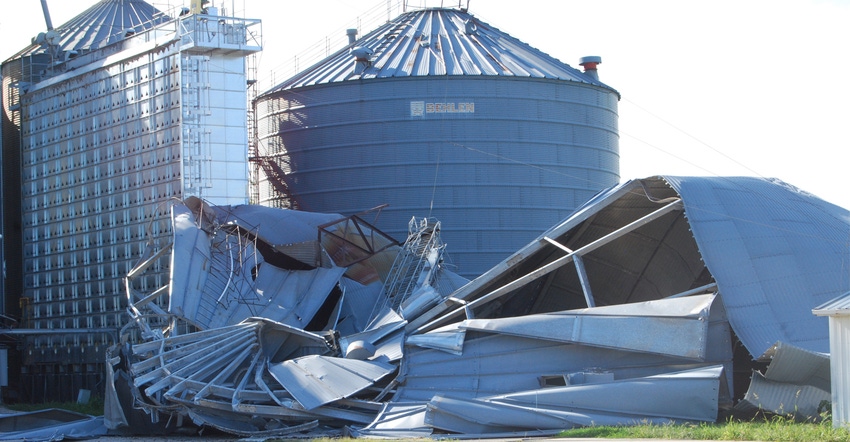August 31, 2020

Iowa agriculture has been significantly hurt by the Aug. 10 derecho windstorm and the continuing drought. USDA has technical and financial assistance available to help farmers and livestock producers cope and recover.
As farmers move into recovery mode and assess damages, they should contact their local USDA Service Center to report losses and learn more about program options available to assist in their recovery from crop, land, infrastructure, and livestock losses and damages.
“FSA has a variety of disaster assistance programs to support agricultural producers during times of adversity,” says Amanda DeJong, state executive director for USDA’s Farm Service Agency in Iowa. “Once you are able to evaluate impacts on your operation, it’s important to contact your local FSA office to timely report all damages and losses and determine how we can assist.”
Various FSA programs available
USDA encourages farmers and livestock producers to contact the FSA county office at the local USDA Service Center to learn which documents should be provided to help the local office expedite assistance, such as farm records, receipts and pictures of damages or losses.
Depending on the operation, FSA offers a number of disaster assistance programs to help offset eligible losses, including the Livestock Indemnity Program; Emergency Assistance for Livestock, Honeybees and Farm-Raised Fish Program; Emergency Conservation Program; Emergency Forest Restoration Program; Noninsured Crop Disaster Assistance Program; and Tree Assistance Program.
Also, producers located in counties with a primary or contiguous disaster designation may be eligible for low-interest emergency loans to help them recover from production and physical losses.
NRCS offers help
USDA’s Natural Resources Conservation Service also offers programs to help in the recovery process. The Environmental Quality Incentives Program can help producers plan and implement conservation practices on land impacted by natural disasters.
“NRCS can be a very valuable partner to help landowners with their recovery efforts,” says Kristy Oates, acting state conservationist for NRCS in Iowa. “Our staff will work one-on-one with landowners to make assessments of the damages and develop approaches that focus on protecting soil and water resources.”
Producers with federal crop insurance coverage should contact their crop insurance agent for assistance. Producers should report crop damage to their agent within 72 hours of damage discovery and follow up in writing within 15 days.
“Crop insurance is there to help producers manage risk because we never know what nature has in store for the future,” says Duane Voy, director of RMA’s regional office that covers Iowa. “The approved insurance providers, loss adjusters and agents are experienced and well-trained in handling these types of events.”
Assistance for communities
Additional NRCS programs include the Emergency Watershed Protection program, which provides assistance to local government sponsors with the cost of addressing watershed impairments or hazards, such as debris removal and streambank stabilization. Eligible sponsors include cities, counties, towns, conservation districts, or any federally recognized Native American tribe or tribal organization. When a watershed impairment occurs due to a natural disaster event, the district conservationist serves as the local facilitator for EWP activities.
The Federal Emergency Management Agency is the lead federal agency for presidentially declared natural disasters. All NRCS emergency work is coordinated with FEMA or its designee. Sponsors must submit a formal request (via mail or email) to the state conservationist for assistance within 60 days of the natural disaster occurrence, or 60 days from the date when access to the sites become available. For more information contact Jon Hubbert, EWP program manager at [email protected] or 515-284-4262.
More Information
Farmers and landowners can use the online Disaster Assistance Discovery Tool, answering five questions that will identify USDA programs that will help meet disaster recovery needs. For more information on all USDA disaster assistance programs, visit farmers.gov/recover or contact your local USDA Service Center, which can be found at farmers.gov/service-center-locator. For assistance with a crop insurance claim, contact your crop insurance agent.
About the Author(s)
You May Also Like






